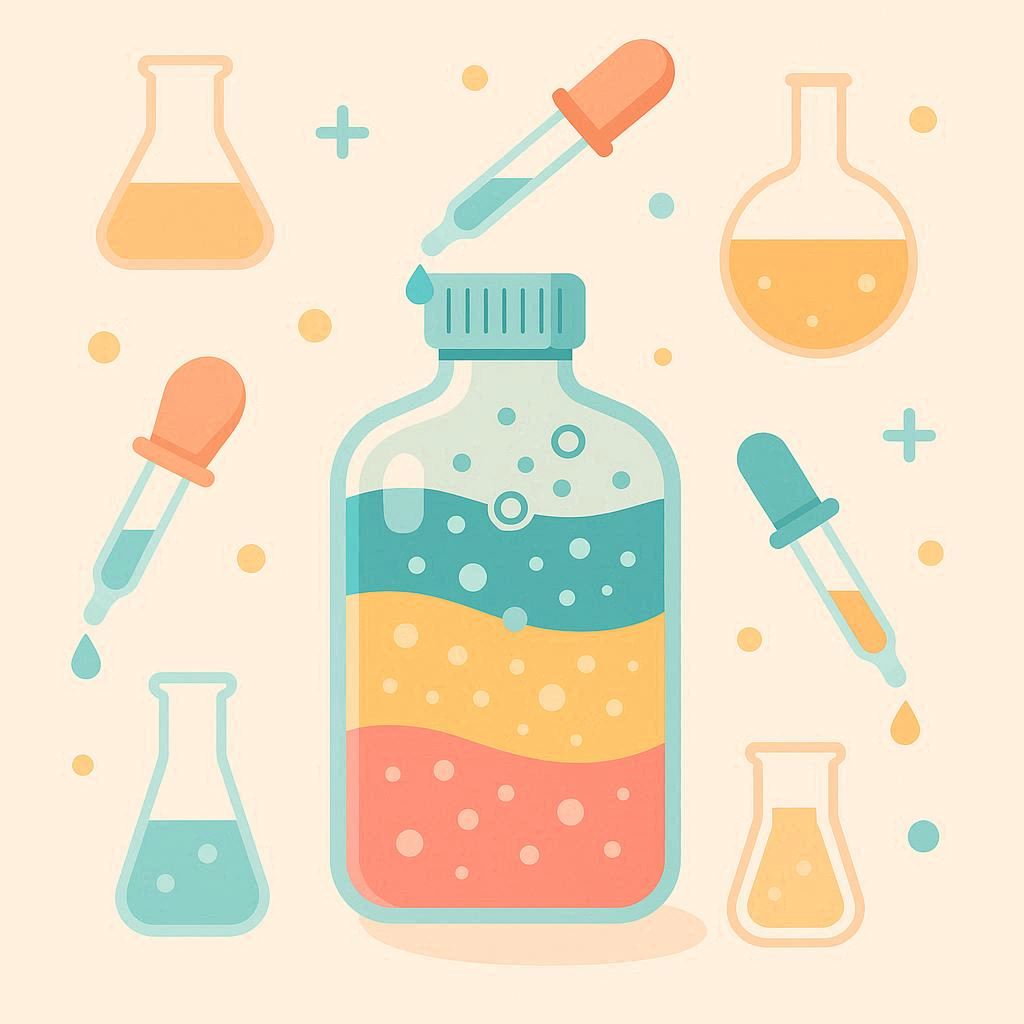Introduction
Have you ever wondered how scientists determine whether a substance is acidic or basic? One fun and natural way to explore the world of chemistry is by using color-changing cabbage! This unique experiment is not only educational but also a great way to engage kids and adults alike in the wonders of science. In this blog post, we’ll dive into the science behind this phenomenon, provide a step-by-step guide on how to conduct the experiment, and explore its educational value.
What is pH?
Before we jump into the experiment, let’s start with the basics. pH is a measure of the acidity or basicity (alkalinity) of a solution. It ranges from 0 to 14, where:
• A pH of 7 is neutral (like pure water).
• A pH below 7 is acidic.
• A pH above 7 is basic.
Understanding pH is crucial in various fields, including chemistry, biology, and even everyday cooking. But how do we test for pH without expensive laboratory equipment? Enter the humble cabbage!
The Science Behind Color-Changing Cabbage
Cabbage contains pigments called anthocyanins, which are responsible for its red, purple, or blue coloring. These pigments are sensitive to pH levels and change color depending on whether they are exposed to an acid, a base, or a neutral solution. This natural property makes cabbage an excellent indicator for testing acids and bases.
Let’s break it down:
• Anthocyanins and pH Sensitivity: Anthocyanins are flavonoids, a type of plant compound, and they act as natural pH indicators. When exposed to different pH levels, these pigments change their structure, which alters the way they absorb light and, consequently, the color we see.
• Red Cabbage vs. Green Cabbage: Red or purple cabbage is the best choice for this experiment because it contains higher concentrations of anthocyanins. Green cabbage, while still usable, doesn’t produce the same vibrant color changes.
How to Conduct the Experiment
Now that we’ve covered the science, it’s time to get hands-on! This experiment is simple, requiring just a few household items. Here’s a step-by-step guide:
- Materials Needed:
- Red or purple cabbage
- A large pot or saucepan
- Water
- A strainer or cheesecloth
- Various household acids and bases (see suggestions below)
- Small bowls or containers
- A spoon or dropper
- Preparing the Cabbage Juice:
a. Cut the cabbage into small pieces and place them in the pot.
b. Add enough water to cover the cabbage pieces and bring the mixture to a boil.
c. Reduce the heat and let it simmer for about 10 minutes to extract the pigments.
d. Use the strainer or cheesecloth to separate the cabbage juice from the solids. Let it cool down before using.Tip: To make the cabbage juice more vibrant, you can add a bit of salt to the water.
- Testing Acids and Bases:
a. Pour equal amounts of cabbage juice into each bowl. The number of bowls will depend on how many substances you want to test.
b. Add a few drops or a small amount of each substance to a separate bowl. Observe and note the color change.
c. Record your observations for comparison. - Household Acids and Bases to Test:
- Acids:
• Lemon juice
• Vinegar (acetic acid)
• Soda (carbonated drinks contain carbonic acid)
• Tomato juice
• Orange juice - Bases:
• Baking soda (sodium bicarbonate)
• Soap
• Toothpaste
• Antacids
• Dish soap - Neutrals:
• Water
• Milk
• Clear fruit juices (like apple juice)
- Expected Results:
- Acids: The cabbage juice will typically turn red or pink.
- Bases: The juice will turn green or yellow.
- Neutral: The color will remain purple or close to its original shade.
- Tips for Better Results:
- Use fresh cabbage for the best color saturation.
- Ensure the cabbage juice has cooled down completely before using it to avoid any cloudiness.
- For a clearer reaction, use a white bowl or container to make the color changes more noticeable.
- If the color change is faint, you can add more of the testing substance.
Visual Guide
To make this experiment even more engaging, consider adding visuals! Here are some ways to incorporate images or videos:
- Include a photo of the cabbage juice next to the various substances you’re testing.
- Create a side-by-side comparison of the color changes.
- Add a video clip of the color transformation when an acid or base is added.
- Include a before-and-after collage of the experiment process.
The Educational Value of This Experiment
This experiment is more than just a fun activity; it’s a valuable learning tool for both children and adults. Here’s how it can be used in various educational settings:
- Introducing Chemistry Concepts:
- For younger students, this experiment can serve as an introduction to basic chemistry concepts like acids, bases, and pH.
- For older students, it can be a stepping stone to more advanced topics like chemical indicators and the behavior of molecules.
- Encouraging Hands-On Learning:
- Hands-on experiments are proven to increase student engagement and retention. This activity allows learners to observe and interact with chemical reactions in a safe and controlled environment.
- Promoting STEM Education:
- Science, Technology, Engineering, and Math (STEM) education is crucial for developing critical thinking and problem-solving skills. This experiment is a simple yet effective way to foster curiosity and interest in STEM fields.
- Using Everyday Materials:
- The best part of this experiment is that it uses materials readily available at home. This makes it accessible to anyone with an interest in learning, regardless of their background or resources.
Variations and Extensions
Once you’ve mastered the basic experiment, here are some variations and extensions to take your learning further:
- Testing Natural pH Indicators:
- Explore other natural materials that can act as pH indicators, such as turmeric, beetroot juice, or blueberries.
- Creating a Homemade pH Testing Kit:
- Combine your cabbage juice with other natural indicators to create a DIY pH testing kit.
- Investigating the pH of Local Water Sources:
- Collect water samples from different sources (like a stream, pond, or tap water) and use the cabbage juice to test their pH levels.
- Growing Your Own Indicators:
- Plant red cabbage in your garden or indoor pots and use it to conduct regular pH experiments throughout the growing season.
Safety Tips
When conducting this experiment, it’s important to handle certain materials with care. Here are some safety tips to keep in mind:
- Handling Acids and Bases Safely:
- Always wear gloves when handling strong acids or bases to avoid skin irritation.
- Avoid touching your eyes or face after handling these substances.
- If any of the testing materials come into contact with your skin, rinse thoroughly with water.
- Choosing Safe Household Substances:
- Stick to mild acids and bases to ensure the experiment is safe for all participants.
- Supervising Children:
- Adult supervision is recommended, especially when handling certain substances like soap or antacids.
- Cleaning Up Properly:
- After the experiment, make sure to clean all utensils and containers thoroughly.
- Dispose of any leftover substances responsibly.
Conclusion
The color-changing cabbage experiment is a fun and interactive way to explore the fascinating world of acids and bases. By using natural materials like cabbage juice, you can create your own pH indicator and test various household substances. This activity not only enhances scientific understanding but also fosters creativity and curiosity. Whether you’re a parent, teacher, or lifelong learner, this experiment offers a unique way to engage with chemistry concepts in a hands-on and enjoyable manner.
So, the next time you’re planning a science lesson or a family activity, consider giving the color-changing cabbage experiment a try. It’s a simple yet impactful way to uncover the hidden chemistry in everyday items and inspire a deeper appreciation for the natural world around us.
Did you try this experiment? Let us know about your experience and any creative variations you’ve explored in the comments below!



